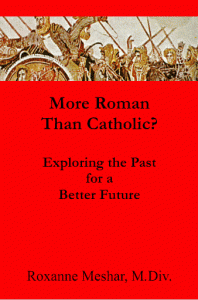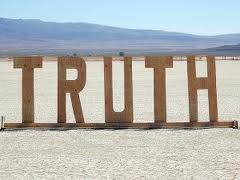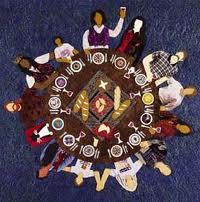
Here’s a reflection while we wait through Good Friday and Holy Saturday.
Perhaps you noticed that I recently added the category Question the Culture. Why? Because as thinking Catholics, we are called to question the culture we live in.
Our Judeo-Christian history is all about questioning the culture. The Israelites, in the story of Exodus, questioned the dominant Egyptian culture and its institution of slavery. Jesus certainly questioned the religious authorities of his day. Early Christians questioned the dominant culture of Rome – and resisted Roman culture by living in a very counter-cultural way (Acts 4:32-35).
To follow our culture or our nation unquestioningly is the heresy of fideism. Fideism is quite simply, blind obedience to any external authority, be it governmental, religious or cultural.
Nationalism, for example, is a problem – or at least it should be. As Christians we believe that God is for all people. Therefore, we shouldn’t care more for those of our own family, community or nation. We care for all, just as God does.
You may observe other things in our culture are problematic too. As we know, every culture has both desirable and undesirable qualities. Because of this, Christians are called to question. It is helpful to know other cultures. The saying, “to know only one culture is to know no culture” is true. This is why Catholic colleges promote study abroad programs.
In the end, it is about questioning. This is the foundation of education. To be Catholic is to question everything.
Humor pokes fun at absurdities in our culture that we overlook. Check out Gary and Elaine, the couple who lives in our catalogs over at Catalog Living.
And here’s another on YouTube with British humor, “Women: Know Your Limits!”
You may also like other posts that question the culture such as A Bar At Home-Really?, Truth or Consequences and American Catholicism – How’s it Working?





